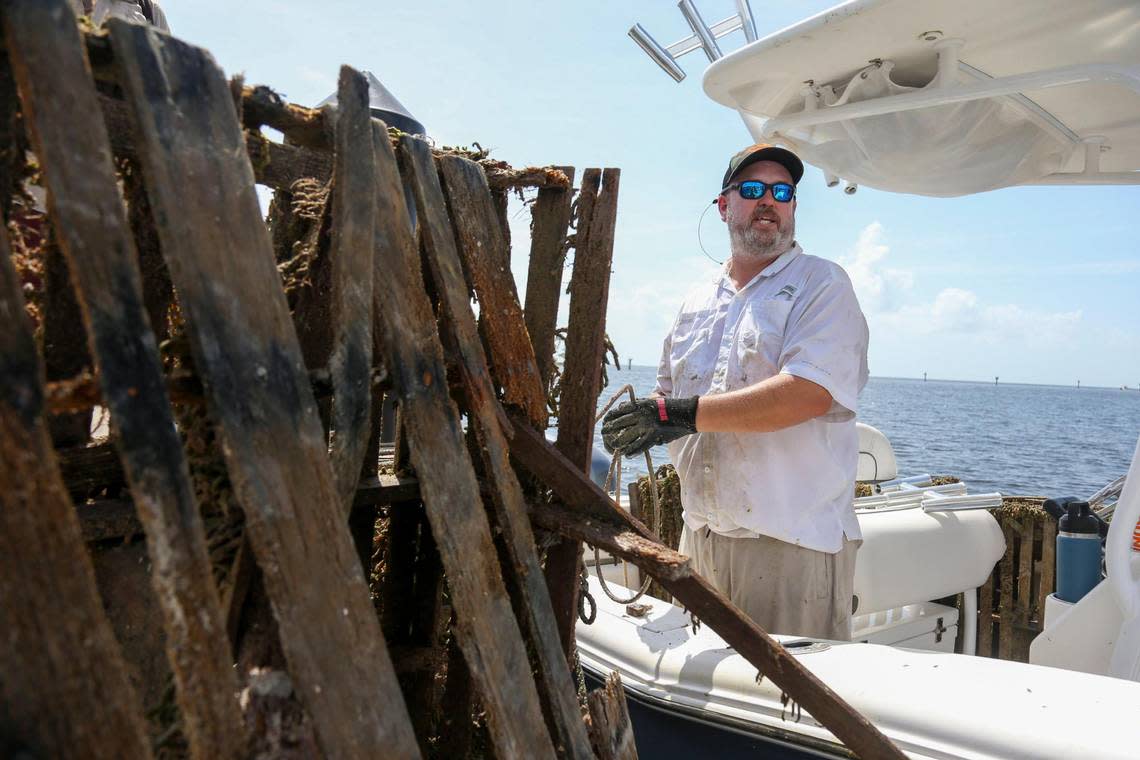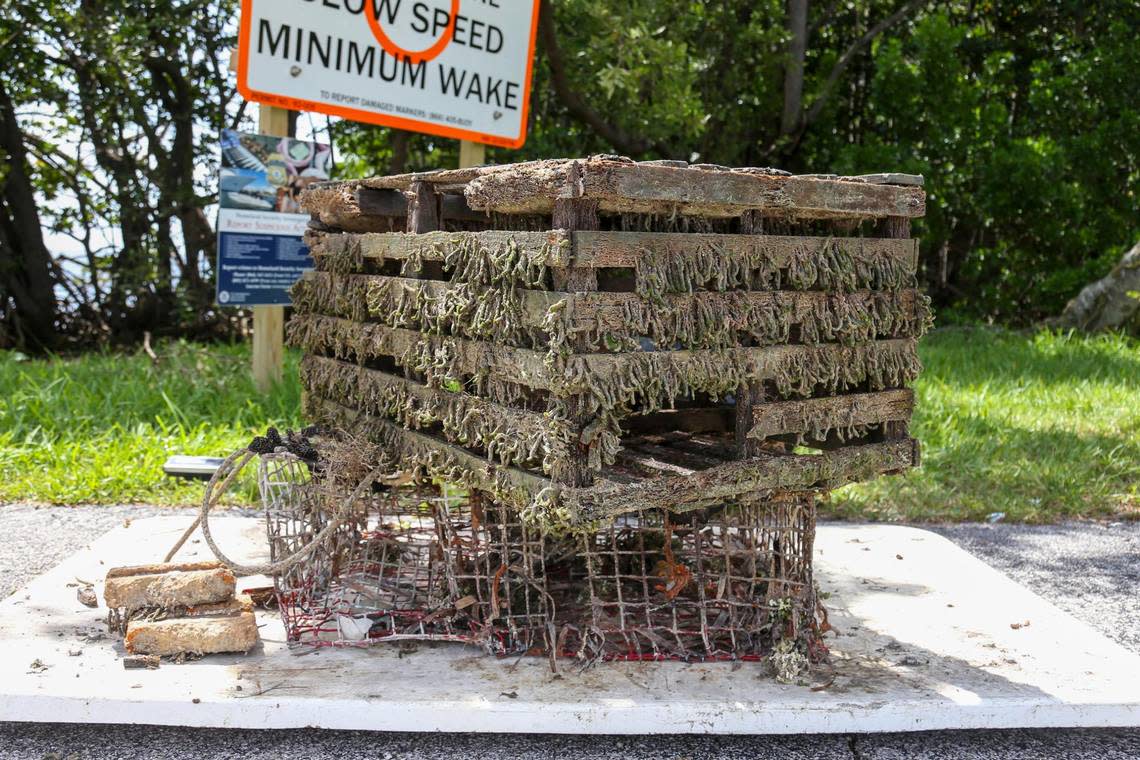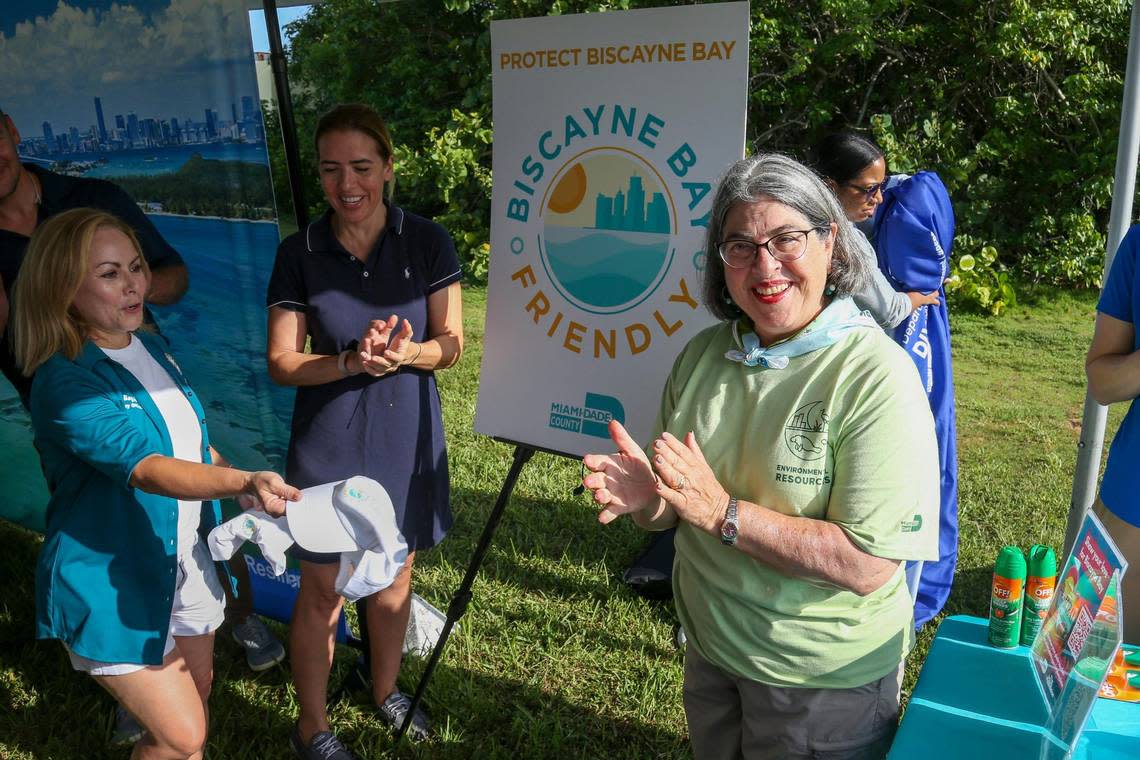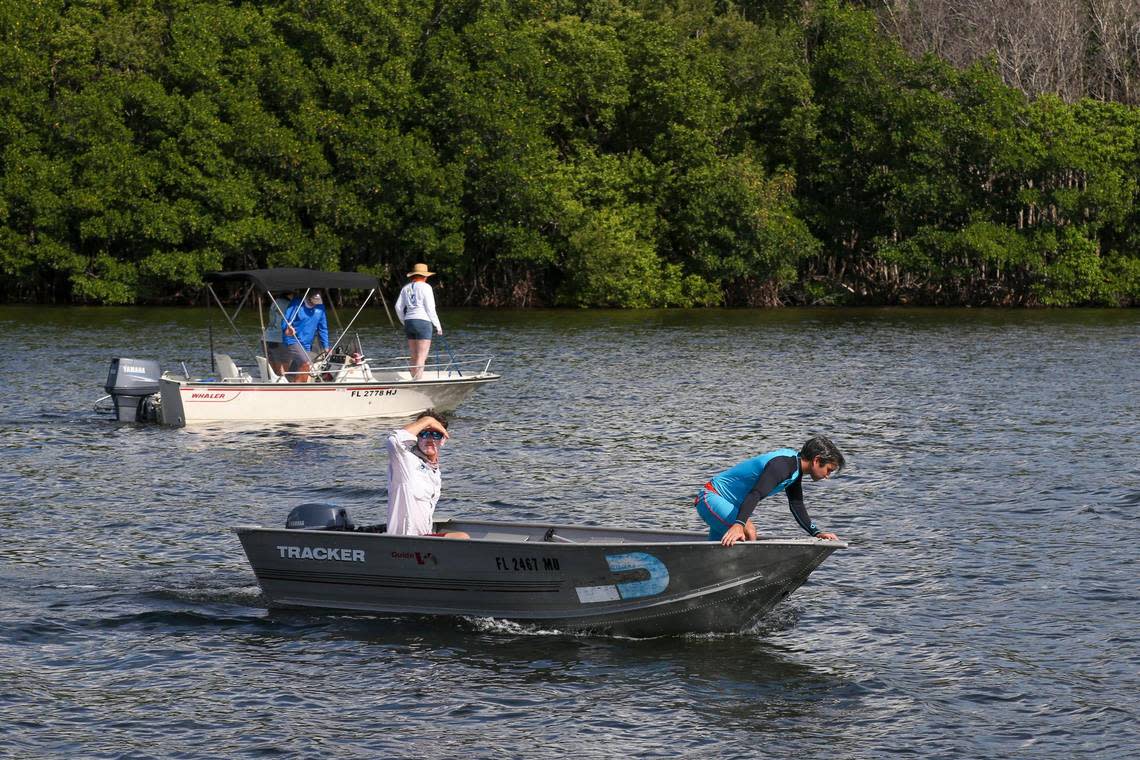Crews bust ‘ghost traps’ that kill lobsters, crabs in Biscayne Bay. They hauled out a ton
Abandoned “ghost traps” scattered in South Florida’s coastal waters keep doing their lethal work, sometimes for years, ensnaring and often killing lobsters, stone crabs and other marine life.
Crews of ghost trap busters hit the waters of Biscayne Bay on Sunday to do something about a problem that haunts the environment and damages valuable fisheries.
Among them was Spencer Crowley, who, one by one, handed off barnacle-laden, corroded lobster traps to his three children on a Matheson Hammock Park dock at an event billed as Miami’s inaugural “Ghost Trap Rodeo.”
The trio — made up of Ava, 14, who proclaims herself the strongest despite being the smallest, and 15-year-old twins Jackson and Ella — scurried away to weigh the first set of rotten traps they’d rounded up that morning with their father.
“102 pounds!” Jackson exclaimed.

It was just a fraction of the nearly two tons of traps hauled from Biscayne Bay during the rodeo, the latest in a string of events across the state to remove abandoned crab and lobster traps from Florida coastal waters.
Commercial and some recreational fishers use traps to primarily target three highly prized species — spiny lobster, stone crab and blue crab. But when the traps are deserted or lost — sometimes moved during storms or losing their buoys — the traps continue to attract and often kill marine life. That’s troubling for the crustacean populations and for the people hoping to catch them.
Crowley, a 48-year-old land-use and environment attorney who serves on the Biscayne Bay Commission, said he and his children let loose a handful of captured animals, both dead and alive, from the traps they pulled.
It’s not just lost legal traps that are an issue. South Florida has a long history, too, with what are known as casitas, homemade — and illegal — traps popular in Cuba, Mexico and the Bahamas. They’re in Biscayne Bay as well and have long been a problem in the Florida Keys, sometimes placed by recreational divers as personal honey holes.
Crowley’s crew was the winning team, bringing in about 720 pounds of debris.
“This is my fun on the weekend,” Crowley said. “The way we’re going to make progress in restoring Biscayne Bay is getting people out on the water and getting the public involved.”

Ocean Aid 360, the group that hosts the events across Florida in partnership with the Florida Department of Environmental Protection, added the Biscayne Bay haul of about a ton to a grand total of 195,000 pounds of waste — that’s 97.5 tons — from Florida’s waterways since 2018. The group is confident it’ll be closer to a quarter of a million pounds after it finishes its July event series.
The group sends recovered blue crab traps to South Carolina to help with oyster restoration, but the rest of the mess goes to the dump.
The seasons for legally placing crabs and lobsters differ across the state. But none are allowed in the bay right now, so volunteers in the event were permitted to remove any and all traps they encountered.
Capt. Neill Holland, executive director of Ocean Aid 360, said the rodeos began in Tampa Bay but have snowballed, bringing together hundreds of participants who want to help clean up a messy and damaging marine problem. So far, the group also has hosted or has plans to in the Florida Keys, the Bahamas and Cedar Key.
“We’re helping to orient people around this phenomenon of ghost fishing, where equipment is left out in the fishery and depletes our shared marine resources over time,” Holland said. “Even if you might not know it, it’s happening.”
New county program for Biscayne Bay
After the rodeo began, Miami-Dade County unveiled a “Biscayne Bay Friendly” outreach program, meant to encourage everyday residents to think critically about their role in keeping the bay healthy.
This can mean anything from picking up your dog’s poop to participating in a local cleanup, Miami-Dade County Mayor Daniella Levine-Cava said.
“This is not just about the people who’ve already been strong advocates for the bay,” Levine-Cava said. “This is telling people: Look, maybe you don’t have a lot of time to dedicate to this. But in your small actions, you, too, can contribute.”

Aledia Perez, a Kendall-native and University of Florida student who’s competing for the title of Miss Earth Cuba, turned out to help. She said it’s easy to get involved in the fight to protect what’s left of Miami’s natural resources.
“All It takes is a simple search on Google — that’s what I did,” Perez said. “I looked up and I was like: ‘What can I do? What’s nearby?’ And then I showed up. It just takes a little effort.”
Irela Bague, the county’s first chief bay officer, also emphasized the importance of community involvement in every aspect of Biscayne Bay restoration. In 2020, it experienced its largest fish kill on record, sparking increased attention toward nutrient pollution, algal blooms and extreme heat that affect the water’s dissolved oxygen levels.
Cleanup efforts stemmed from a recommendation of the Biscayne Bay Task Force formed in the kill’s wake, of which Bague said the county has completed about 50 of 61.

The ghost trap rodeo underlines that the problems plaguing the bay aren’t always obvious to the public, she said.
“Everybody talks about landside pollution, but there’s folks that leave horrible stuff out there.” Bague said. “Particularly those traps.”
